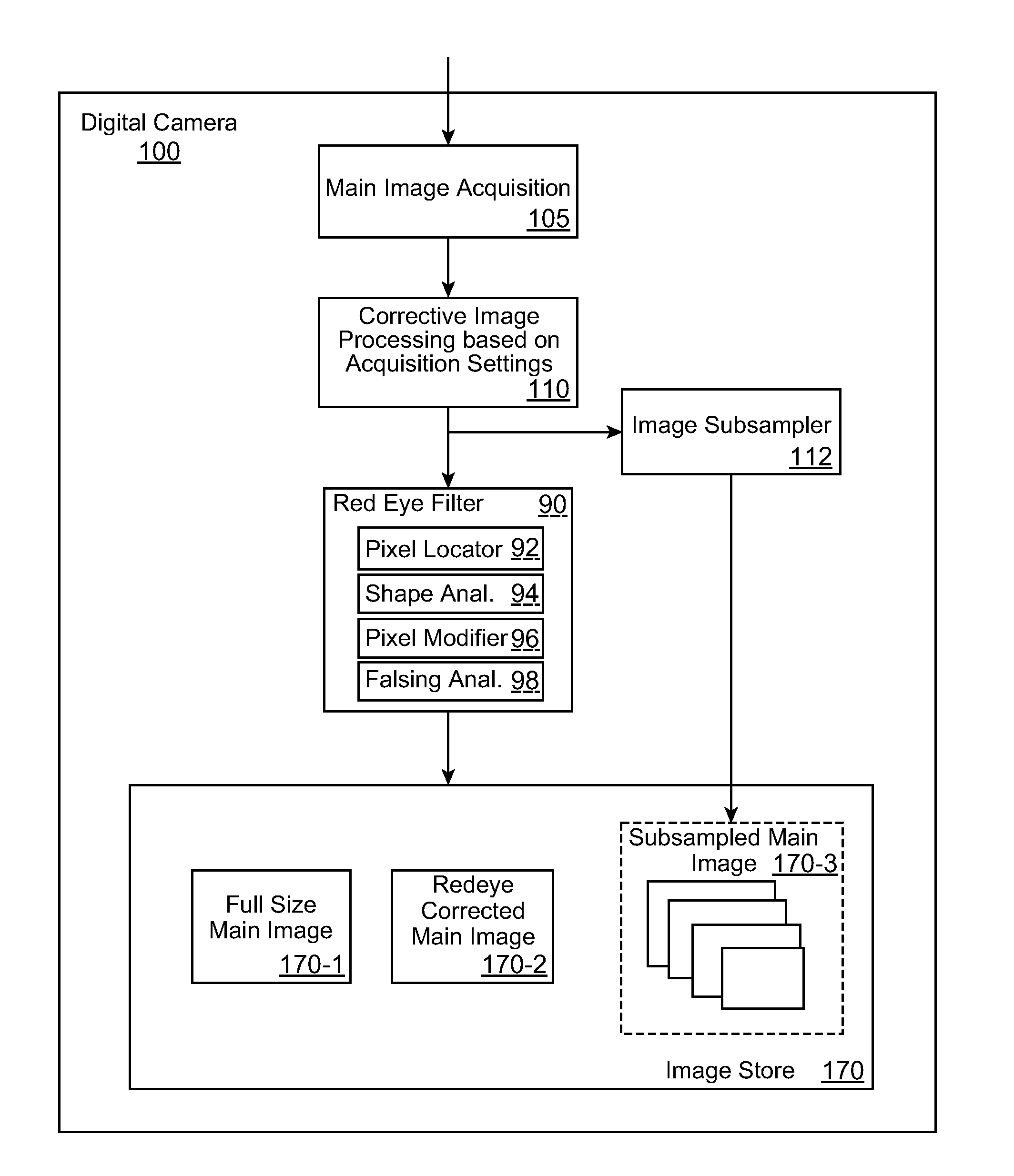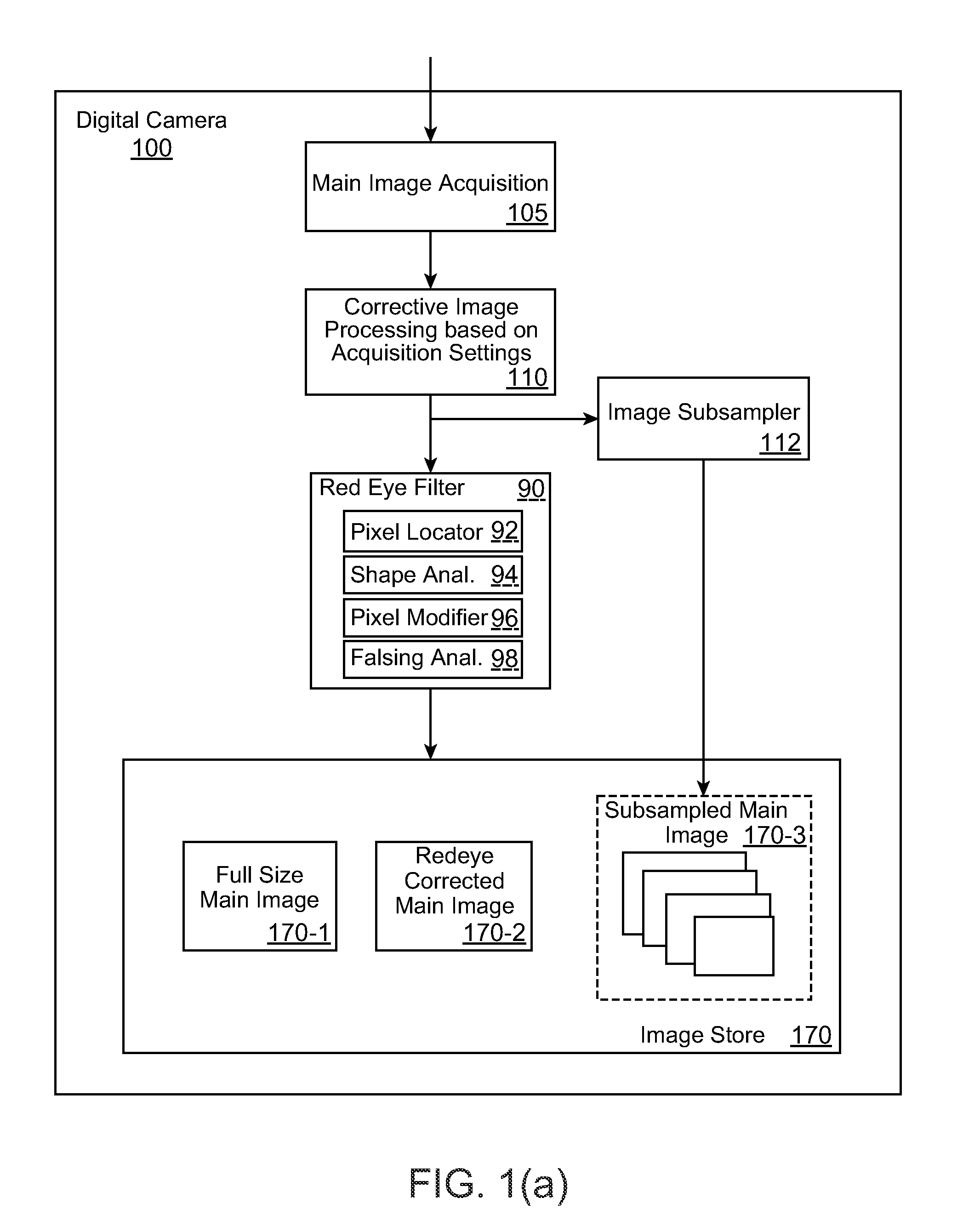Analyzing partial face regions for red-eye detection in acquired digital images
a technology of digital image and partial face, applied in the field of digital image processing, can solve the problems of deteriorating the overall detection of red eye defects and objectionable phenomena
- Summary
- Abstract
- Description
- Claims
- Application Information
AI Technical Summary
Benefits of technology
Problems solved by technology
Method used
Image
Examples
example process
[0176]In an exemplary process, a redeye detection algorithm may be applied on an entire image, which may be a low resolution image such as a preview or postview image. A red eye list may be obtained of regions suspected as candidate red eye regions. An extended eye detector may be applied to the image from which an extended eyes list is generated. Using one or more geometric operations, such as applying rectangles or other polygons or elliptical shapes to the image, a list is generated from the extended eyes list.
[0177]Redeye detection accuracy improvement is achieved when the red eye candidate region list is combined with the extended eyes list or the list discussed above as being generated therefrom by applying one or more geometric operations. Each eye- or eye pair-rectangle may be verified by intersecting the redeye candidate list. If not, a new refined red eye detection may be applied inside the eye- or eye pair-rectangle, e.g., based on the presence of the eye- or eye pair-rec...
example method
[0272]FIG. 15 is a flow chart showing a method according to certain embodiments. The segmentation filter 2090 of the image acquisition device 2020 (also referred to as a “camera” in parts of the disclosure) shown in FIG. 14 can use the foreground / background segmentation information 2099 of a stored image I(x,y) to produce a binary map with foreground (FG) pixels and background (BG) pixels (Block 2210). The binary map might, for example, assign a first value to background pixels and a second value to foreground pixels such that an image corresponding to the binary map shows the foreground image in black and the background in white. U.S. Patent Publication No. 2006 / 0039690, titled “Foreground / Background Segmentation In Digital Images With Differential Exposure Calculations,” filed Aug. 30, 2005, is hereby incorporated by reference in its entirety. In one embodiment, the binary map is refined to improve the quality of the segmentation of a foreground object from the background of a dig...
PUM
 Login to View More
Login to View More Abstract
Description
Claims
Application Information
 Login to View More
Login to View More - R&D
- Intellectual Property
- Life Sciences
- Materials
- Tech Scout
- Unparalleled Data Quality
- Higher Quality Content
- 60% Fewer Hallucinations
Browse by: Latest US Patents, China's latest patents, Technical Efficacy Thesaurus, Application Domain, Technology Topic, Popular Technical Reports.
© 2025 PatSnap. All rights reserved.Legal|Privacy policy|Modern Slavery Act Transparency Statement|Sitemap|About US| Contact US: help@patsnap.com



